
Fundamentals
The delicate artistry of caring for textured hair extends beyond the waking hours, finding its gentle rhythm in the quietude of night. At its most fundamental, a Protective Nighttime Style refers to any method or arrangement of hair undertaken before sleep, with the specific purpose of safeguarding its integrity, retaining precious moisture, and preserving its sculpted form. This basic understanding offers a guiding light for anyone beginning their journey into intentional hair care, especially those with the wondrous complexities of Black and mixed-race hair.
For many, the morning ritual of hair styling can feel like a perpetual battle against the effects of sleep ❉ frizz, tangles, and a noticeable lack of definition. Protective nighttime approaches offer a serene counterpoint to this struggle, serving as a preventative measure rather than a reactive fix. The core meaning here lies in foresight and preservation, acknowledging that the hours of slumber, while restorative for the body, can pose unique challenges to hair strands.
Protective Nighttime Styles are essential practices for safeguarding hair during sleep, especially for textured strands.
Imagine a gentle embrace for your hair as you drift into dreams. That is the simple explanation of these styles. They are not merely aesthetic choices; they are a fundamental act of care, an acknowledgment of hair’s vulnerability during periods of unconscious movement and environmental exposure. The very definition of these styles hinges on their proactive nature, aiming to minimize the mechanical friction and moisture loss that often occur against pillowcases, leading to breakage and dryness.

The Quiet Threats ❉ Friction and Dehydration
During sleep, our hair often encounters friction against bedding, particularly cotton pillowcases. This constant rubbing can disturb the hair’s outermost layer, the cuticle, causing it to lift and become rough. The result? Frizz, tangles, and ultimately, mechanical damage that can lead to split ends and breakage.
Concurrently, absorbent materials like cotton can draw moisture away from the hair, leaving it dry and brittle upon waking. This dual assault of friction and dehydration is a primary reason why nighttime protection becomes so significant, particularly for hair types already prone to dryness and fragility.
A study highlighted the impact of sleep environments on skin hydration, noting a significant decrease in skin hydration (24.23%) after 7 hours of sleep in a 30% relative humidity environment. While this research focused on skin, the principles of moisture loss in dry conditions extend to hair, underscoring the environmental challenges hair faces overnight. This demonstrates how the surrounding air itself can contribute to dehydration, making thoughtful nighttime care even more pressing for maintaining hair’s delicate moisture balance.

Foundational Techniques for Gentle Care
- Loose Braids ❉ Creating one or several loose braids helps to contain the hair, preventing tangles and minimizing friction against the pillow. This simple method maintains strand alignment and reduces stress.
- Pineapple Method ❉ This involves gathering all hair loosely at the very top of the head, securing it with a soft scrunchie. The hair then spills forward, resembling a pineapple, keeping the lengths off the neck and away from friction.
- Silk or Satin Bonnets/Scarves ❉ Covering the hair with a silk or satin bonnet or scarf creates a smooth, non-absorbent barrier between the hair and bedding. These materials significantly reduce friction and help hair retain its natural moisture.
- Silk or Satin Pillowcases ❉ For those who prefer not to cover their hair directly, a pillowcase made of silk or satin offers a similarly smooth surface, allowing hair to glide without snagging or excessive friction.
The initial implementation of these styles is often straightforward, requiring minimal tools and time. Their primary intention is to provide a gentle shield, allowing individuals to wake with hair that feels softer, appears less disheveled, and retains more of its daytime styling. This basic commitment to nighttime care lays a foundational understanding for a healthier hair journey.
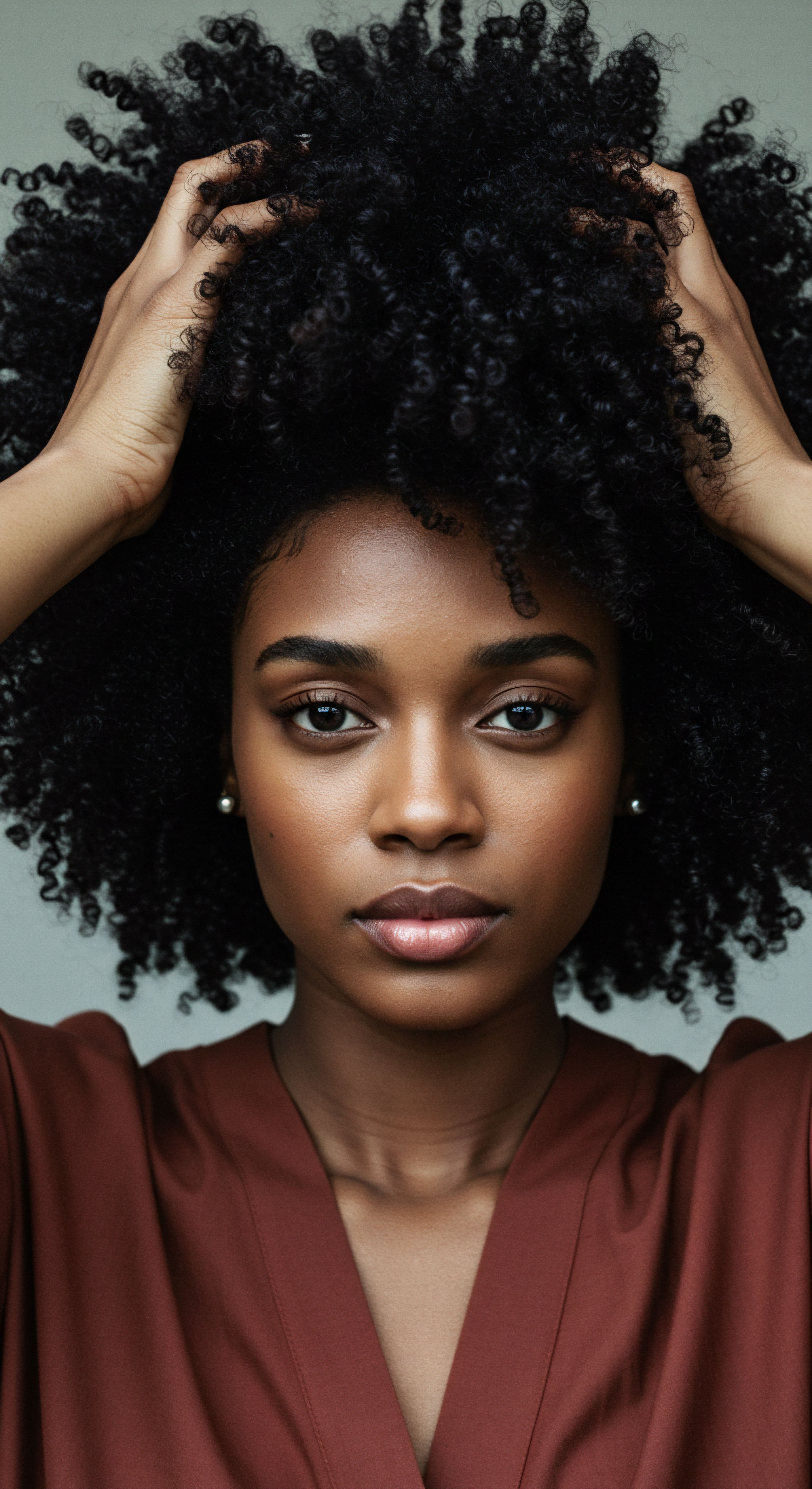
Intermediate
Moving beyond the foundational tenets, the intermediate meaning of Protective Nighttime Styles deepens into a more nuanced comprehension of their practical applications and the specific benefits they confer upon textured hair. This exploration involves understanding the intricate interplay between hair structure, environmental factors, and the strategic choices made before rest. The designation of these practices extends beyond mere protection; it encompasses a sophisticated strategy for moisture management, curl preservation, and the mitigation of mechanical stress.
For individuals with textured, Black, or mixed-race hair, the nightly routine becomes a pivotal moment in the overall health and vitality of their strands. The unique structure of coiled and curly hair, with its often raised cuticles and inherent propensity for dryness, renders it particularly susceptible to damage from friction and moisture depletion during sleep. Therefore, the application of protective styles transcends a simple habit; it represents a deliberate act of preventative care, a conscious effort to fortify the hair against the subtle aggressions of the night.
Beyond basic protection, these styles become a sophisticated strategy for moisture, curl, and stress management for textured hair.
Consider the daily reality for many with natural hair ❉ the painstaking process of detangling, moisturizing, and styling. Without proper nighttime safeguarding, much of this effort can be undone by morning. This intermediate interpretation acknowledges that these styles serve as a bridge, extending the life of a style and minimizing the need for daily manipulation, which itself can contribute to breakage over time. The concept of “style preservation” gains a heightened significance here, reducing daily friction and manipulation.
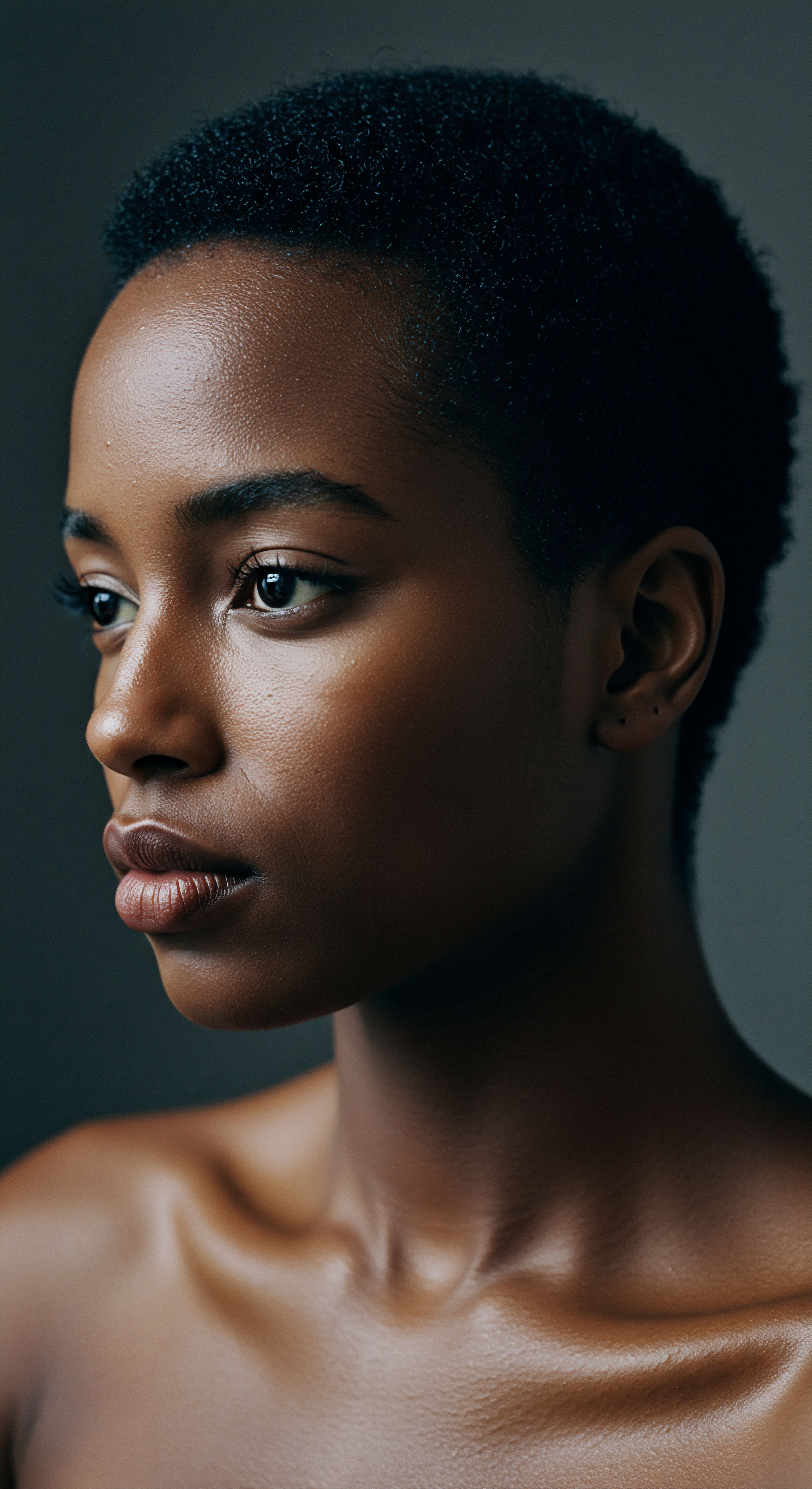
Strategic Moisture Retention and Curl Preservation
A key component of protective nighttime methods for textured hair is their ability to aid in moisture retention. Unlike straighter hair types, the natural oils (sebum) produced by the scalp struggle to travel down the coiled length of textured strands, leaving them more prone to dryness. By enclosing the hair within a satin bonnet or against a silk pillowcase, the hair’s natural moisture is less likely to evaporate into the air or be absorbed by a cotton surface. This creates a micro-environment that fosters hydration, allowing any applied leave-in conditioners or oils to work more effectively.
Furthermore, these styles are instrumental in preserving the definition and integrity of curl patterns. For example, a well-executed “pineapple” or a series of loose twists can keep curls from being crushed or stretched out during sleep. This maintains the hair’s natural form, reducing the need for extensive restyling in the morning, which often involves re-wetting or applying more product, potentially leading to product buildup or over-manipulation.
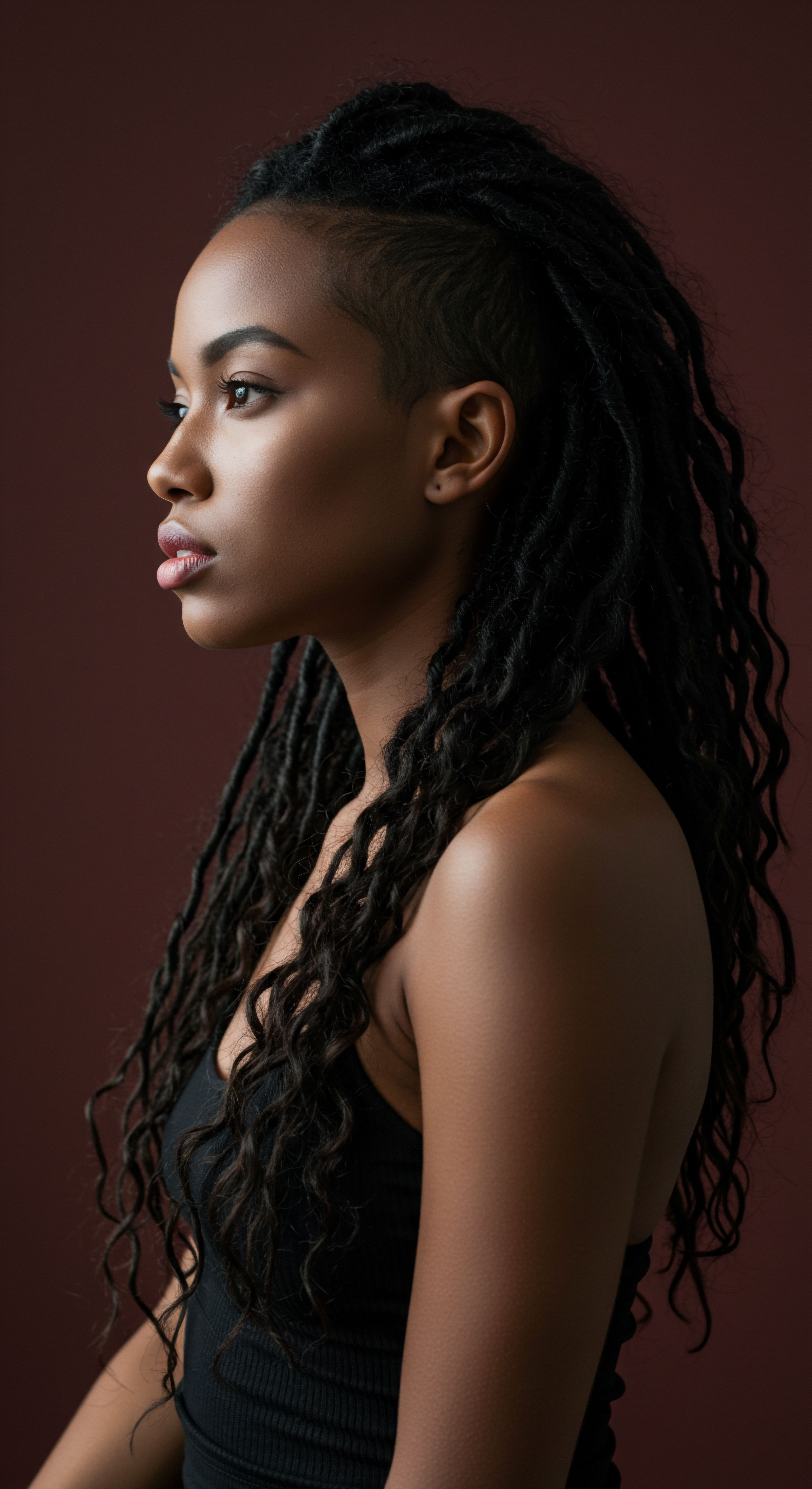
Common Intermediate Protective Nighttime Styles and Their Intent
The choices made for nighttime protection often depend on the current style and desired morning outcome.
| Style/Method Loose Twists or Braids |
| Primary Intent To contain hair and minimize friction. |
| Benefit for Textured Hair Reduces tangles, maintains curl definition, lessens breakage, especially effective for elongated styles. |
| Style/Method Pineapple Method (High Bun) |
| Primary Intent To lift hair off the pillow and preserve volume. |
| Benefit for Textured Hair Maintains curl pattern, prevents crushing of curls, minimizes frizz at the crown. |
| Style/Method Banding |
| Primary Intent To stretch hair slightly and prevent shrinkage. |
| Benefit for Textured Hair Reduces shrinkage, elongates curls without heat, can prepare hair for specific morning styles. |
| Style/Method Satin/Silk Lined Caps/Bonnets |
| Primary Intent To create a smooth, protective barrier. |
| Benefit for Textured Hair Minimizes friction, retains moisture, prevents frizz, suitable for various styles including locs and braids. |
| Style/Method Satin/Silk Pillowcases |
| Primary Intent To provide a low-friction sleeping surface. |
| Benefit for Textured Hair Reduces hair breakage and split ends from friction, less absorbent than cotton, suitable for all hair types. |
| Style/Method These methods are chosen based on specific hair needs and desired outcomes, offering tailored protection. |
Each of these techniques, while seemingly simple, carries a deeper intention. For instance, the low-friction surface of a silk pillowcase or bonnet is not just about comfort; it is about preventing the microscopic damage that occurs when hair cuticles are roughed up by coarser fabrics. Research indicates that afro-textured hair is particularly prone to breakage due to its coiled structure, making friction reduction a critical aspect of care. By embracing these practices, individuals move towards a more conscious and effective hair care regimen, fostering healthier, more resilient strands over time.
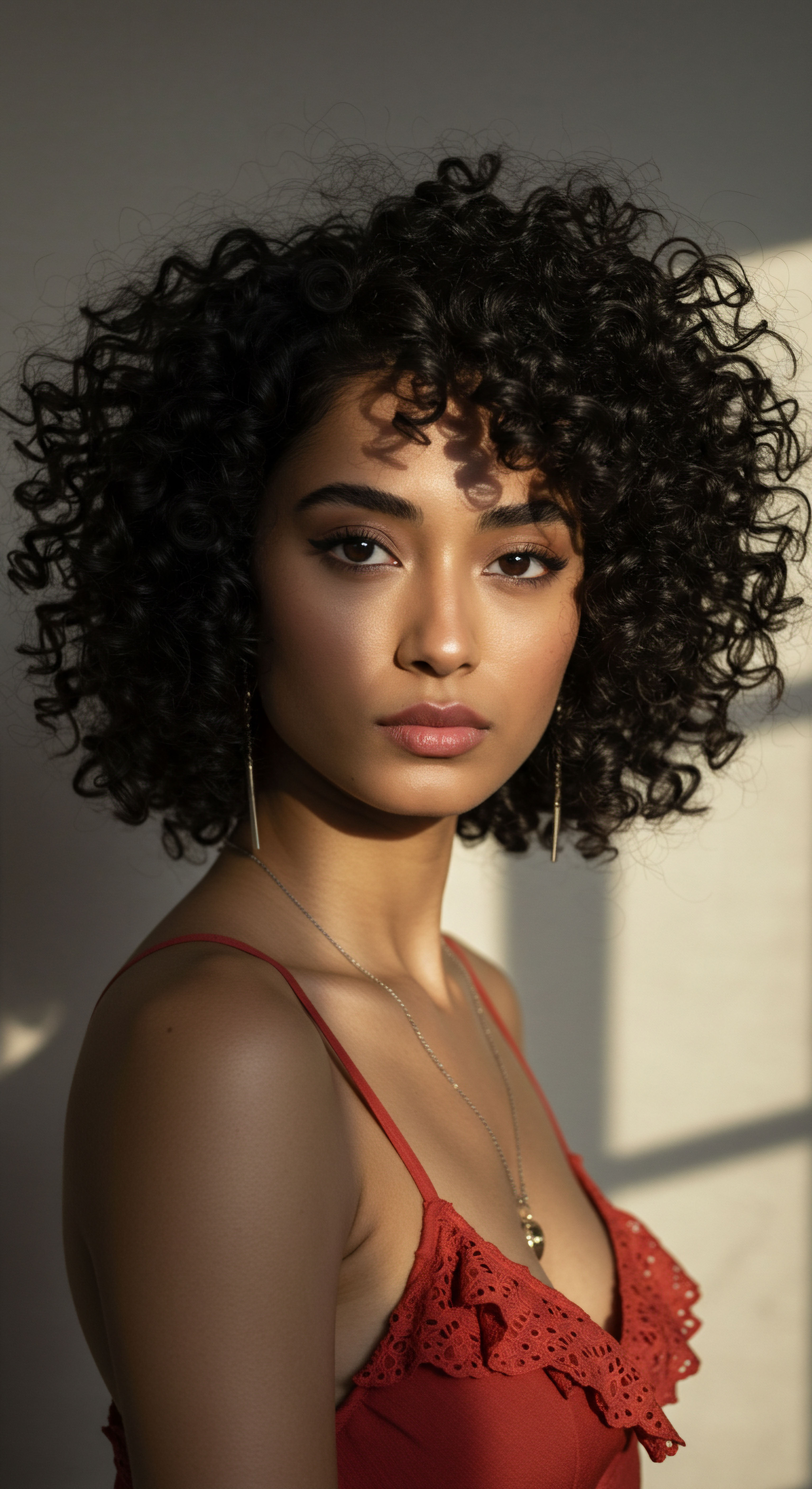
Advanced
The advanced meaning of Protective Nighttime Styles transcends a mere set of techniques, elevating into a sophisticated understanding of hair biology, cultural continuity, and long-term hair health strategies, particularly within the unique context of textured, Black, and mixed-race hair. This is not simply about safeguarding strands; it is a profound elucidation of the intricate relationship between nocturnal care, the inherent vulnerabilities of coiled hair structures, and the historical echoes of hair preservation practices. This interpretation acknowledges the Protective Nighttime Styles as a critical component of a holistic hair wellness paradigm, influencing not only daily appearance but also the very resilience and longevity of hair fibers.
The precise definition of Protective Nighttime Styles, at this advanced level, encompasses a comprehensive set of intentional practices and material choices designed to mitigate biomechanical stress, preserve hydro-lipid balance, and maintain the structural integrity of hair during periods of rest. These practices serve as a crucial countermeasure against environmental and mechanical aggressors encountered during sleep, which disproportionately affect hair types characterized by elliptical cross-sections and varied curl patterns. The explication of their significance extends to their role in preventing cumulative micro-damage, minimizing cuticle abrasion, and optimizing conditions for length retention and overall hair vitality.
Advanced Protective Nighttime Styles represent a sophisticated synergy of hair science and cultural wisdom, critical for the enduring health of textured hair.

The Biophysical Imperative ❉ Minimizing Nocturnal Traction and Moisture Dysregulation
From a biophysical standpoint, the nocturnal environment presents distinct challenges to hair. The average person shifts position numerous times throughout the night, creating repeated friction between hair and bedding. For textured hair, where the cuticle layers are often more raised or irregular, this friction can be particularly detrimental, leading to increased cuticle lifting, fraying, and subsequent protein loss. This phenomenon, often termed “nocturnal traction,” contributes significantly to breakage and frizz, especially at the crown and ends of the hair.
The use of smooth, non-absorbent materials like silk or satin is not merely a luxury; it is a scientifically sound intervention. These materials possess a lower coefficient of friction compared to cotton, allowing hair strands to glide rather than snag, thereby preserving the cuticle’s smooth alignment and reducing mechanical damage.
Beyond mechanical stress, moisture dysregulation is a pervasive concern. Textured hair is inherently prone to dryness due to its coiled structure, which impedes the even distribution of sebum from the scalp along the hair shaft. Cotton pillowcases, being highly absorbent, can further exacerbate this by wicking away essential moisture and applied products.
The strategic enclosure of hair within a satin bonnet or scarf creates a localized humid microclimate, preventing trans-epidermal water loss from the hair shaft and allowing moisturizers to penetrate more effectively. This thoughtful moisture management is paramount for maintaining elasticity and preventing brittleness, which are precursors to breakage.
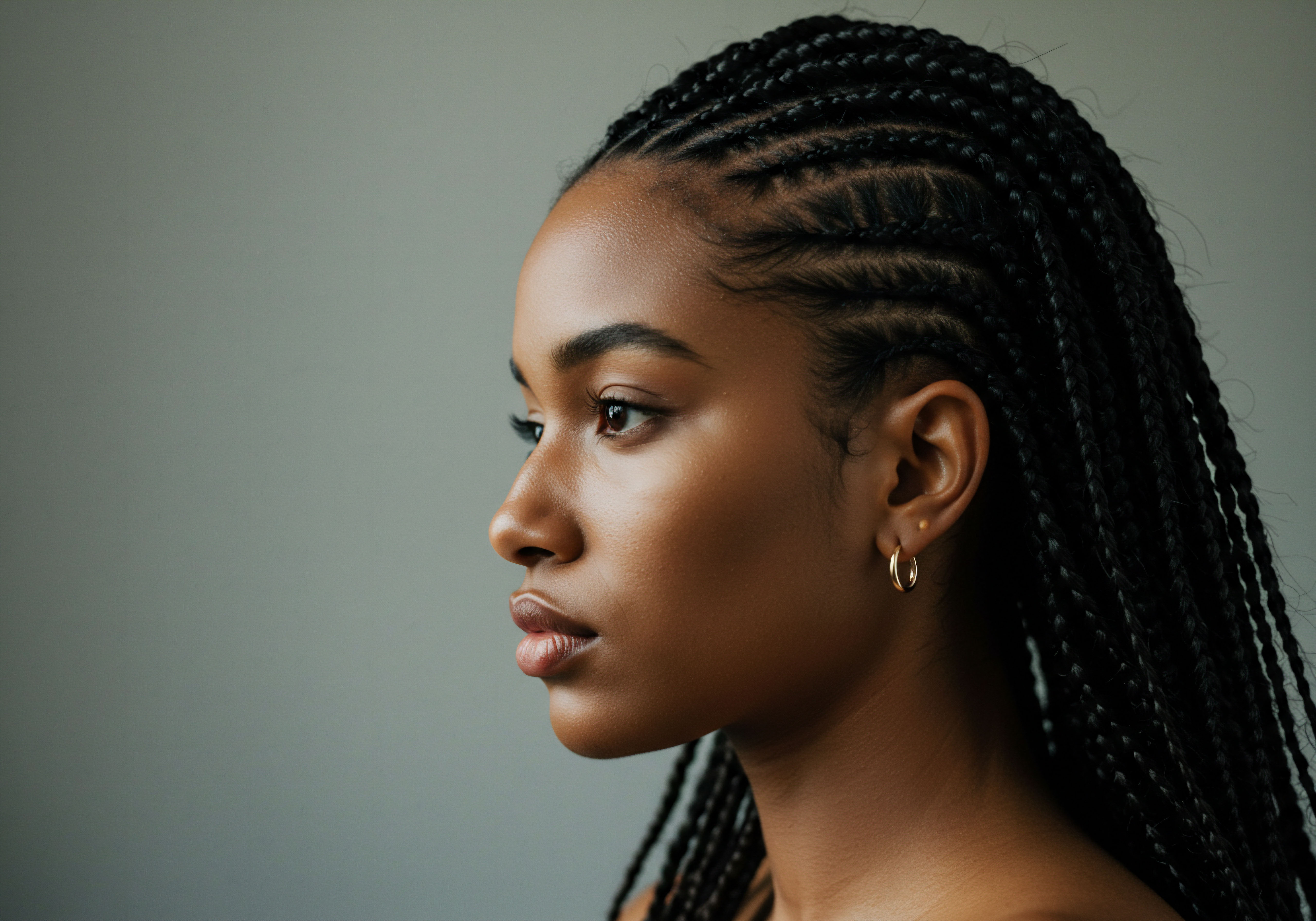
Cultural Lineage and Hair Resilience
The practice of protecting hair at night, particularly among Black women, is not a contemporary invention but rather a continuation of deeply rooted historical and cultural traditions. Throughout various African cultures, head coverings, whether for ceremonial purposes, social status, or daily protection, have been a longstanding practice. During the transatlantic slave trade and subsequent eras, these practices took on additional layers of meaning, becoming acts of resilience, identity preservation, and practical necessity in harsh conditions where hair care resources were scarce.
The hair bonnet, for instance, evolved from a simple protective covering into a symbol of “bedtime beauty” and cultural continuity, preserving intricate styles and minimizing damage in the absence of frequent styling. This historical context provides a profound significance to Protective Nighttime Styles, underscoring their role not just as a beauty regimen, but as a link to ancestral wisdom and a testament to enduring ingenuity in hair care.
A noteworthy aspect of this cultural heritage is the long-term impact of hair practices. While modern science illuminates the biophysical mechanisms, the consistent application of protective measures over generations has demonstrably contributed to hair health and length retention within communities with textured hair. This deep-seated knowledge, passed down through families, often predates formal scientific inquiry yet aligns with its findings on friction reduction and moisture preservation.

Advanced Considerations for Tailored Protection
The optimal Protective Nighttime Style is not universal; it is a personalized strategy informed by hair porosity, density, length, and the desired outcome. For instance, individuals with High Porosity Hair, whose cuticles are more open and prone to rapid moisture loss, may benefit immensely from pre-sleep moisturizing treatments sealed in with a satin bonnet. Conversely, those with Low Porosity Hair, which resists moisture absorption but retains it well once hydrated, might focus on lighter product application to avoid product buildup before encapsulation.
Moreover, the choice of style can also address specific concerns such as traction alopecia, a form of hair loss caused by chronic tension on hair follicles. While some protective styles, if too tight, can contribute to this condition, the intent of Protective Nighttime Styles is precisely the opposite ❉ to minimize tension. A study on “Nocturnal Traction” highlighted how certain techniques for maintaining hairstyles overnight, such as tight rollers, could pose a risk for traction alopecia. This underscores the importance of loose and gentle application of any protective style, ensuring that the hair is cradled, not strained.
The application of Protective Nighttime Styles, therefore, represents a sophisticated synthesis of scientific understanding and inherited wisdom. It is a daily commitment to the longevity and vibrancy of textured hair, recognizing that consistent, gentle care during sleep is as vital as any daytime treatment. This deep interpretation clarifies the immense value these practices hold, not just for aesthetics, but for the fundamental health and cultural narrative of hair.
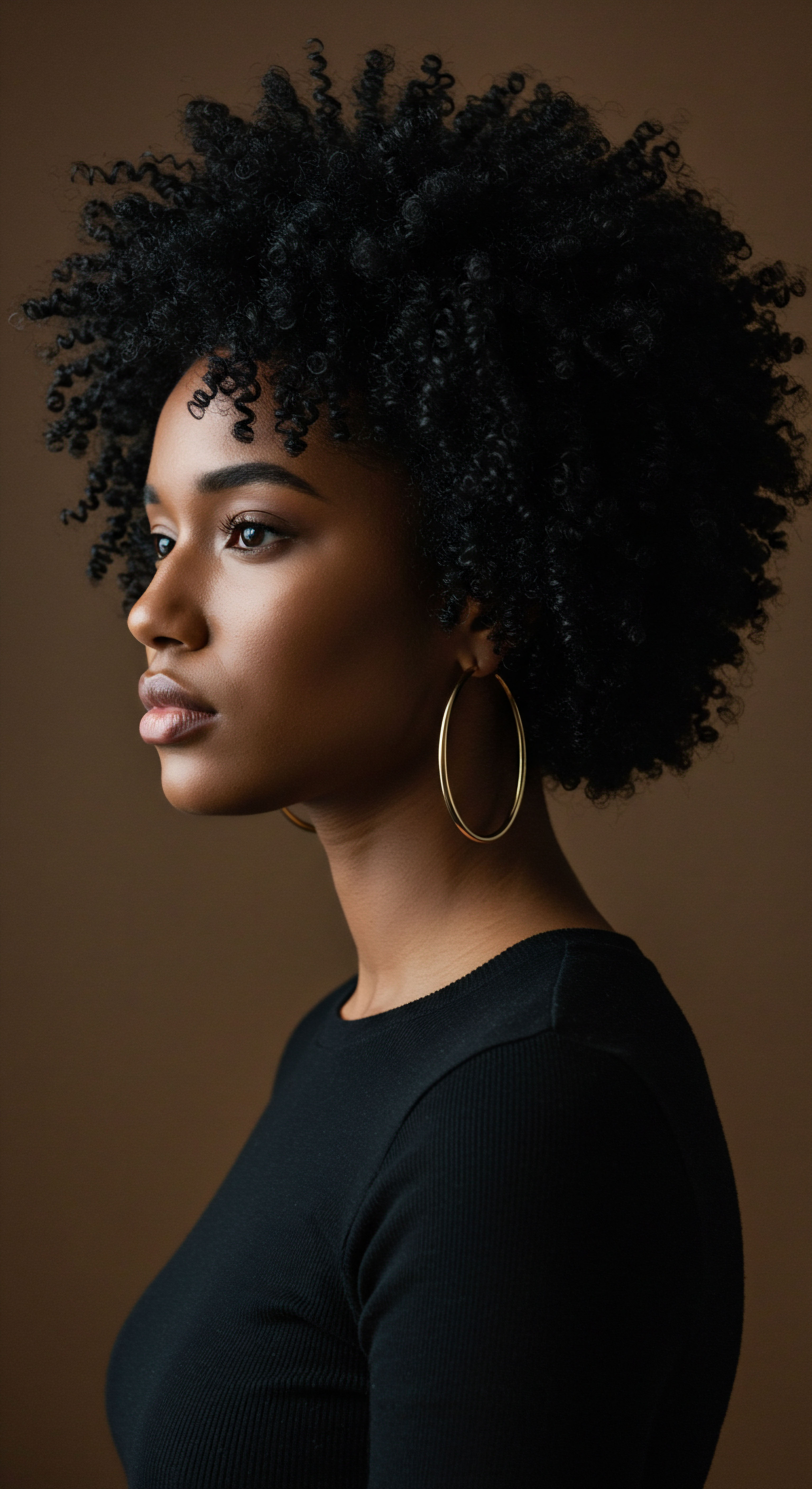
Reflection
As we draw our exploration of Protective Nighttime Styles to a gentle close, we are left with a quiet appreciation for the profound wisdom embedded within these seemingly simple practices. They stand as a testament to the enduring human desire to nurture and preserve, especially when it comes to the cherished crown of textured hair. This journey, from fundamental safeguarding to a sophisticated understanding of biophysical needs and cultural lineage, illuminates a path where science and heritage walk hand in hand, each enriching the other.
The gentle embrace of a silk bonnet or the strategic placement of a loose braid before slumber is more than a routine; it is an act of deep care, a quiet conversation with one’s hair. It speaks to a recognition of vulnerability, a proactive shield against the unseen friction and moisture whispers of the night. For those with textured hair, this nightly ritual is a whisper of resilience, a continuation of practices that have safeguarded beauty and identity across generations.
Protective Nighttime Styles are more than routines; they are acts of deep care, safeguarding the resilience and identity of textured hair.
In the delicate dance between daily life and restorative sleep, our hair, particularly textured strands, requires an intentional pause, a moment of gentle consideration. These styles offer that pause, allowing the hair to rest, to replenish, and to maintain its intrinsic beauty without the relentless demands of the waking world. The choice to adopt these practices is an investment, a quiet promise to honor the unique needs of one’s hair, fostering its health and vibrancy for all the mornings to come. It is a testament to the power of small, consistent acts of tenderness, weaving a tapestry of wellbeing that extends far beyond the strands themselves, touching the very spirit of self-care.

References
- Clinikally. (2023). 10 Effective Ways to Protect Your Hair While You Sleep.
- Drowsy. Sleep masks for hair care ❉ prevent breakage and control frizz.
- I Love Riccio. How not to damage curly hair at night.
- Silkie. The Link Between Sleep Position and Hair Damage ❉ What You Need to Know.
- Better Not Younger. (2024). Sleeping with Long Hair ❉ Avoid Breakage.
- Wilderness Safaris. (2015). The history & meaning of head wraps across Africa.
- Sonson. (2021). The History and Meaning of Headwraps and Black Culture.
- Hype Hair. (2023). Unveiling the History of the Hair Bonnet for Black Women.
- Hair Bonnets. (2024). The History and Evolution of Hair Bonnets ❉ From Traditional to Modern Styles.
- Mitchell, C. S. & Jackson, J. C. (2025). Historical Perspectives on Hair Care and Common Styling Practices in Black Women.
- McMichael, A. J. et al. (2021). Nocturnal Traction ❉ Techniques Used for Hair Style Maintenance while Sleeping May Be a Risk Factor for Traction Alopecia. Skin Appendage Disorders, 7(3), 1-4.
- St George’s Hospital. Afro-textured Hair.
- British Association of Dermatologists. Caring for Afro-textured hair.
- Slipssy. (2025). Slipssy’s First-Night Effect ❉ How Reducing Friction Transforms Your Hair Overnight.
- Saha, R. & Kanjilal, B. (2020). Alternative Protocol for Hair Damage Assessment and Comparison of Hair Care Treatments. International Journal of Trichology, 12(2), 53-59.
- Oh, Y. K. et al. (2019). A study of skin characteristics according to humidity during sleep. International Journal of Cosmetic Science, 41(6), 570-575.
- CLOUD NINE. Hair Breakage ❉ Causes, Solutions and FAQs.
- Stylist. How to protect your hair and prevent breakage while you sleep.
- Clinikally. (2024). Demystifying Natural Hair Shrinkage ❉ Strategies for Length Retention and Care.
- RevAir. (2022). Scientifically Flawless Length Retention Tips for Natural Hair.
- Quora. (2023). I’m African-American. I’ve been trying to grow out my 4c hair. Every night I sleep with a durag and sometimes I try to moisturize before. When I wake up my hair seems dry and also flattened. Is it okay if when I sleep with a durag my hair is flat?